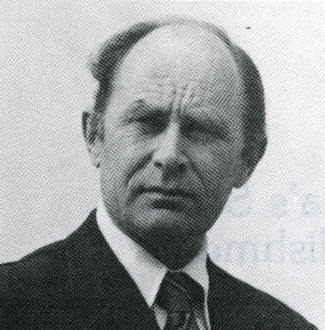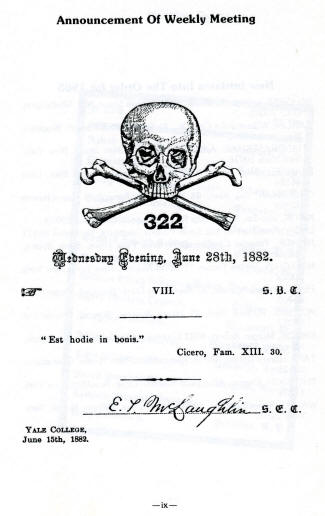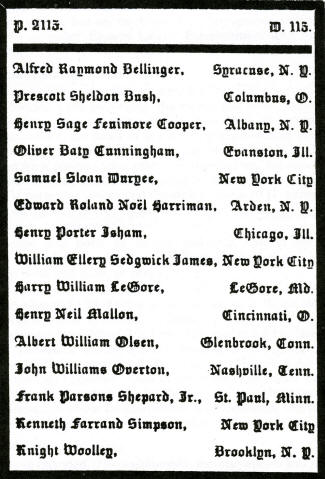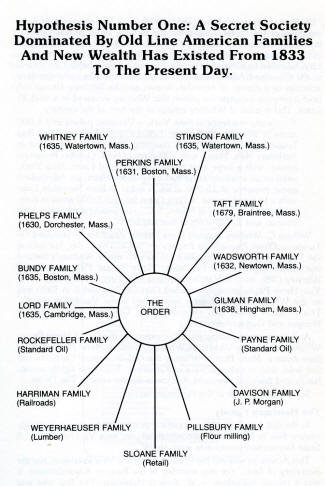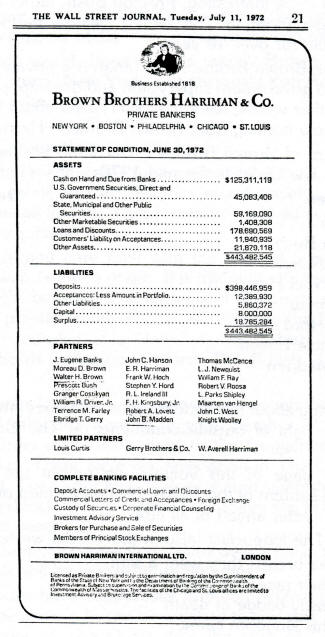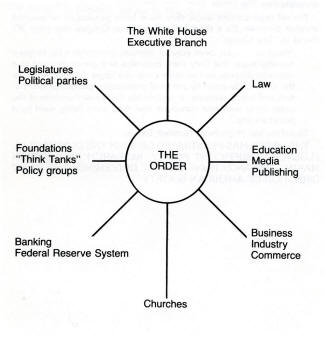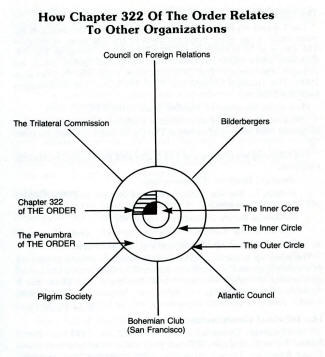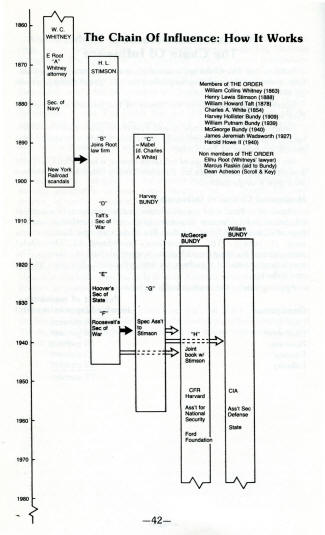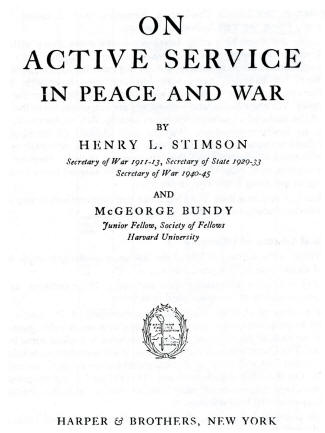by Antony C. Sutton
NOTICE: THIS WORK MAY BE PROTECTED BY COPYRIGHT
YOU ARE REQUIRED TO READ THE COPYRIGHT NOTICE AT THIS LINK BEFORE YOU READ THE FOLLOWING WORK, THAT IS AVAILABLE SOLELY FOR PRIVATE STUDY, SCHOLARSHIP OR RESEARCH PURSUANT TO 17 U.S.C. SECTION 107 AND 108. IN THE EVENT THAT THE LIBRARY DETERMINES THAT UNLAWFUL COPYING OF THIS WORK HAS OCCURRED, THE LIBRARY HAS THE RIGHT TO BLOCK THE I.P. ADDRESS AT WHICH THE UNLAWFUL COPYING APPEARED TO HAVE OCCURRED. THANK YOU FOR RESPECTING THE RIGHTS OF COPYRIGHT OWNERS.
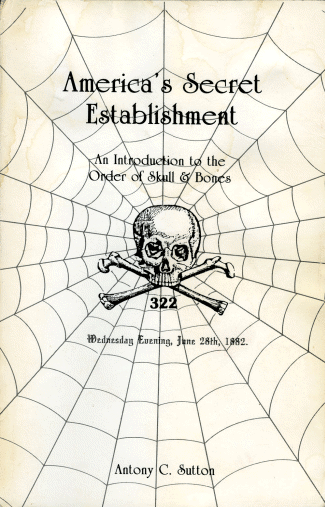
"Some of the biggest men in the U.S. in the fields of commerce and manufacturing know that there is a power so organized, so subtle, so complete, so pervasive that they had better not speak above their breath when they speak in condemnation of it."
-- President Woodrow Wilson
CHAPTER VI
[CLEMENT] 'Naturally therefore superstition, having somewhere found a beginning, has become a fountain of senseless wickedness; and afterwards, as it was not checked, but gained increase and rushed on in full flood, it has created a multitude of daemons, sacrificing hecatombs, celebrating public festivals, setting up statues, and building temples, which indeed----for I will not keep silence even on this, but will convict them----were called euphemistically temples, but were in reality tombs, that is to say, tombs which had got the name of temples. But now, I pray you, forget at length your superstition, and be ashamed to worship tombs.
'In the temple of Athena at Larissa in the Acropolis is the tomb of Acrisius, and at Athens in the Acropolis the tomb of Cecrops, as Antiochus says in the ninth book of his Histories. And what of Erichthonius? Is he not buried in the temple of Athena Folias? And Ismarus the son of Eumolpus and Daeira, is he not buried in the precincts of the Eleusinium, which lies under the Acropolis? And the daughters of Celeus, are they not buried at Eleusis?
'Why should I tell you of the women who came from the Hyperboreans? There are two called Hyperoche and Laodice, who are buried in the precinct of Artemis at Delos, which is in the temple of the Delian Apollo.
'Leander says that Cleomachus is buried at Miletus in the Didyrnaeum. Here, if we follow Zeno of Myndus, it would not be right to pass over the monument of Leucophryne, who is buried in the temple of Artemis in Magnesia, nor yet the altar of Apollo in Telmessus, which also, the story says, is the monument of Telmesseus the soothsayer.
'Ptolemy too, the son of Agesarchus, in his first book concerning Philopator says that Cinyras and the descendants of Cinyras are buried in Paphos in the temple of Aphrodite.
'Were I, however, to go over all the tombs which are worshipped by you, "all time would not suffice for me to tell"; [Homer, Od. xx. 351] while you, if no shame for these audacities steals over you, may wander round with your faith in the dead, utterly dead yourselves:
"Ah! wretched men, what evil doom is this?"
A little further on he says:
'Another new god the Roman Emperor has deified with great solemnity in Egypt, and almost in Greece; his favourite Antinous, who was extremely beautiful, was deified by him, as Ganymede was by Zeus.
'For lust, when free from fear, is not easily restrained: and men now celebrate the sacred nights of Antinous, the shame of which was known to the lover who shared his vigils.'
He also adds:
'And now the favourite's tomb is the temple and city of Antinous: for just as temples are held in reverence, so, I suppose, are tombs, pyramids, mausoleums, and labyrinths----other temples these of the dead, as those before mentioned were tombs of the gods.'
And again, a little further on:
'Come then, let us also briefly make the round of your games, and put an end to these great sepulchral festivals, the Isthmian, Nemean, and Pythian, and besides these the Olympian. At Pytho the Pythian dragon is worshipped, and the festival of the serpent is proclaimed as the Pythia. At the Isthmus the sea cast up a miserable carcass, and the Isthmian games are a lamentation for Melicertes: at Nemea another child Archemorus is buried, and the boy's funeral games are called Nemea. Pisa is the tomb in your midst, O Panhellenes, of a Phrygian charioteer, and the Zeus of Phidias claims as his own the Olympian games, which are the funeral libations of Pelops.'
-- Praeparatio Evangelica (Preparation for the Gospel), by Eusebius of Caesarea
Table of Contents
1. An Introduction To The Order
o Author's Preface
o Memorandum Number One: Is there a conspiracy explanation for recent history?
o Memorandum Number Two: The Order, What it is and how it began
o Memorandum Number Three: How much is known about The Order?
o Memorandum Number Four: Who is in this secret society?
o Memorandum Number Five: What organizations has it penetrated?
o Memorandum Number Six: Operations of The Order
o Memorandum Number Seven: How The Order relates to the CFR and Trilaterals
o Memorandum Number Eight: The Chain of Influence: how it works
o Memorandum Number Nine: The Bundy Operation
o Memorandum Number Ten: Keeping the lid on the pot
2. How the Order Controls Education
o Memorandum Number One: It all began at Yale
o Memorandum Number Two: The look-say reading scam
o Memorandum Number Three: The Illuminati Connection
o Memorandum Number Four: The Leipzig Connection
o Memorandum Number Five: The Baltimore Scheme
o Memorandum Number Six: The Troika spreads its wings
o Memorandum Number Seven: The Order's objective for education
o Memorandum Number Eight: Summary
o Memorandum Number Nine: Conclusions and Recommendations
3. How The Order Creates War and Revolution
o Preface
o Memorandum Number One: Created Conflict and the Dialectic Process
o Memorandum Number Two: Operational Vehicles for Conflict Creation
o Memorandum Number Three: Thesis: The Order Creates the Soviet Union
o Memorandum Number Four: Antithesis: Financing the Nazis
o Memorandum Number Five: Angola and China -- the New Dialectic
4. The Secret Cult of The Order
o Memorandum Number One: Introduction to the Cult of The Order
o Memorandum Number Two: Organization of The Order
o Memorandum Number Three: Ritual of The Order
o Memorandum Number Four: Satanic aspects of The Order
o Memorandum Number Five: Is The Order also Illuminati?
5. Reprints of Rare Material on The Order
6. Index
[/quote]To Whom It May Concern
We come before the college now on Justice's side arrayed,
To claim redress for open wrongs that Vandal hands have made,
To give a college sentiment expression bold and free,
Asserting each man's native right, if such a thing there be.
We represent no clique or clan, but honest men and true,
Who never will submit to that which fifteen men may do,
Who feel the shameful yoke that long has on the college lain,
And who propose to do their best to break that yoke in twain.
We are not "soreheads." God forbid that we should cherish strong
Desires to be identified with principles that long
Have been a blight upon the life and politics of Yale,
Before whose unjust aims the glow of "Boss Tweed's" brass would pale.
We represent the neutral men, whose voices must be heard,
And never can be silenced by a haughty look or word.
Of those whose influence here at Yale would be but void and null
Did they not wear upon their breasts two crossed bones and a skull.
We hold no grudge 'gainst any man, but wish that all may be
United by the common bond of peace and harmony;
Yet, when a few do to themselves most proudly arrogate
The running of affairs, there can be no such happy state.
What right, forsooth, have fifteen men to lord it over all?
What right to say the college world shall on their faces fall
When they approach? Have they, indeed, to "sickly greatness grown,"
And must each one with servile speech them his "superiors" own?
If they have grounds on which they base their claim as just and true,
We challenge them to set them forth exposed to public view,
That all may know the reasons why this oligarchy proud
Elect themselves as lords supreme o'er us, the "vulgar crowd"
We offer no objections to their existing clan --
No one disputes with them this right, we question but the plan
On which they act, -- That only he who wears upon his breast
Their emblem, he for every post shall be considered best.
We wish this understood by all. Let none who read this say
That we are moved by petty wrongs or private spite obey;
It is for principles of right that we with them contend,
For principles which they've ignored, but which we here defend.
O fellow students, who with us revere these classic halls,
O ye across whose pathway bright their sacred glory falls, --
Ye men of every class who feel our Alma Mater's care,
Shall college life beneath these elms this loathsome aspect wear?
Shall none assert the right to act as to each seemeth best,
But cringe and fawn to him who wears a death's head on his breast?
Nay, let all rise and break the spell whose sickly glamour falls
About all that originates within those brown stone walls.
And if they will not hear our claims, or grant the justice due,
But still persist in tarnishing the glory of the blue,
Ruling this little college world with proud, imperious tones,
Be then the watchword of our ranks -- Down, Down With Skull and Bones!
-- Anonymous

